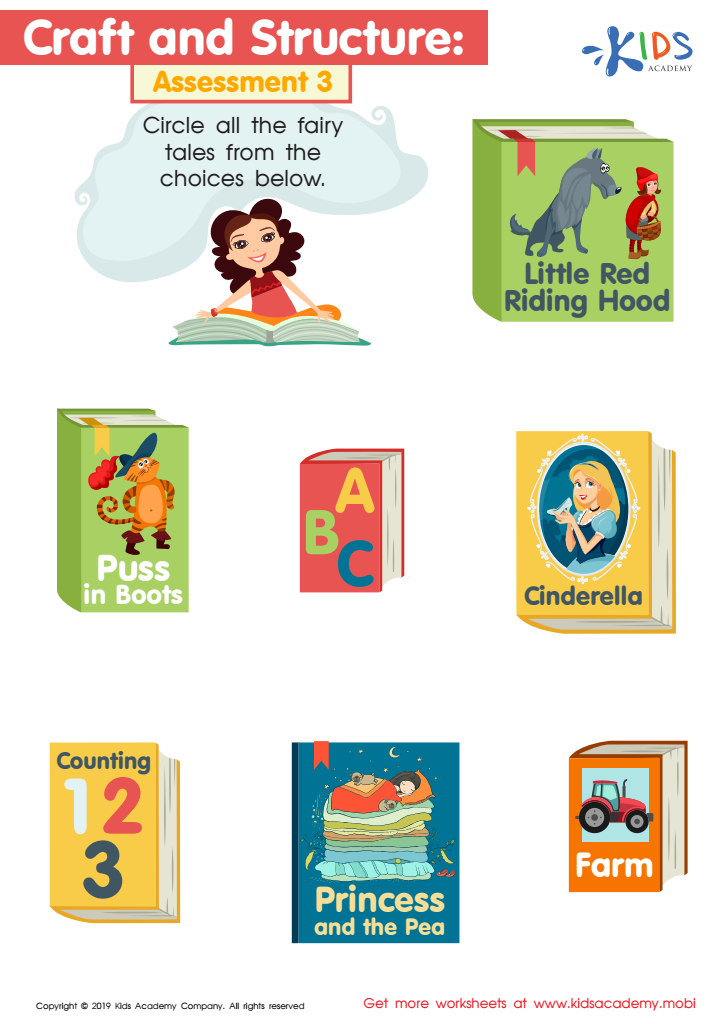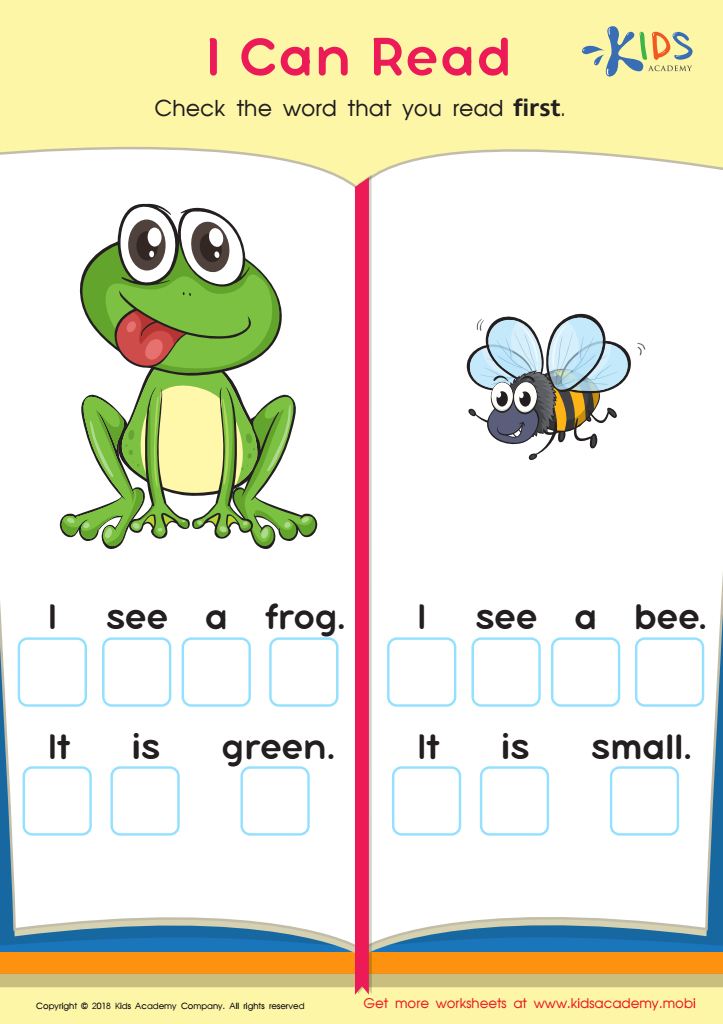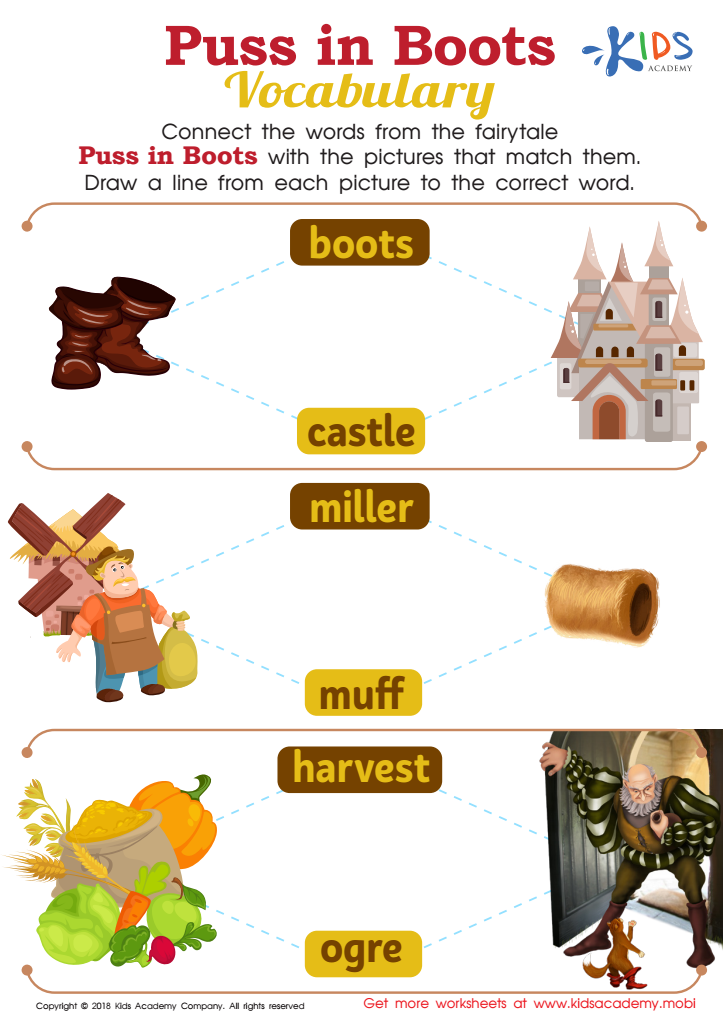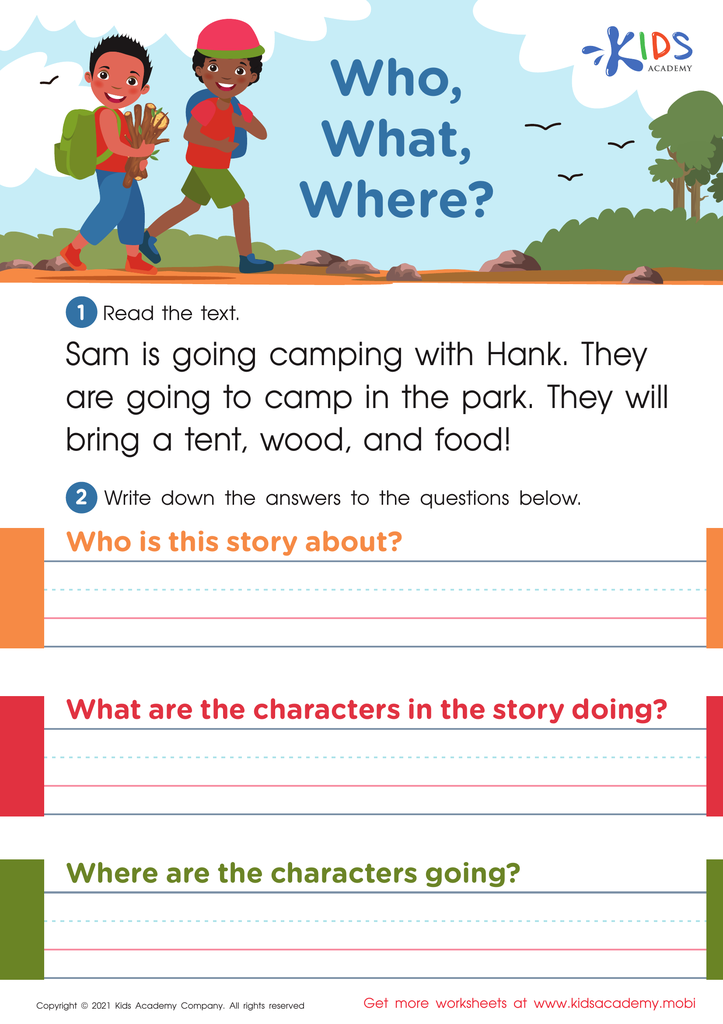Understanding context Reading Fiction Worksheets for Ages 3-6
4 filtered results
-
From - To
Discover "Understanding Context Reading Fiction Worksheets for Ages 3-6" at Kids Academy, designed to ignite imagination and enhance critical thinking in young learners. These engaging worksheets help children identify the who, what, where, when, and why of stories through age-appropriate exercises. Perfect for early readers, our printable resources foster comprehension skills by encouraging kids to recognize context clues and narrative elements. Provide your child with the tools to become confident readers while enjoying captivating tales. Join us at Kids Academy and make learning an exciting adventure! Explore our worksheets today and watch your child unlock the magic of reading.


Craft and Structure: Assessment 3 Worksheet


I Can Read Worksheet


Puss in Boots Vocabulary Worksheet


Who, What, Where? Worksheet
Understanding context while reading fiction is crucial for children aged 3-6 because it forms the foundation for comprehensive language development and cognitive growth. At this developmental stage, young minds are rapidly expanding their vocabulary and learning to make sense of the world around them. Literature offers rich, varied contexts that introduce new words and concepts, fostering improved language skills.
When parents and teachers engage children with fiction, they help kids learn to infer meaning from clues in the text and illustrations. This skill is vital not only in reading but in everyday situations where comprehension is key to effective communication. Contextual understanding also aids in the development of critical thinking and empathy. Kids learn to consider characters' motivations, emotions, and reactions, nurturing their ability to empathize with others.
Moreover, engaging stories captivate young attention spans and ignite a lifelong love for reading. By discussing context, parents and teachers help make the reading experience interactive and enjoyable, which reinforces positive attitudes toward books. In essence, focusing on context in fiction for young children enriches their vocabulary, enhances cognitive skills, and builds emotional intelligence, laying a robust foundation for future learning and personal growth.

 Assign to My Students
Assign to My Students






.jpg)









